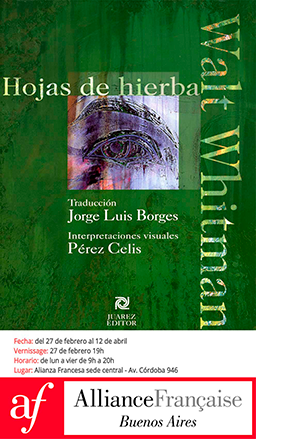PERFORMANCE AND MYTH IN HECTOR CANONGE
Héctor Canonge began to explore the possibilities of performance almost without being aware of it. With an extensive career in the field of new media and the art surrounding these technologies, and almost by inertia, he incorporates the use of his body in one of his installations, Schema CorpoReal, where his body covered by bar codes was scanned by the public so that, through texts that emerged referring to parts of his body, they ended up constructing a narrative of identity.

After a series of projects in which apparently antagonistic languages such as technologies and the digital were intermingled with the body and human identity, Canonge began to increase the presence of the analogue versus the digital. Much of the blame for this turn could be due to an incident in Istanbul that ended up with part of his digital and technological tools retained, so he had to reinvent himself.
From that almost involuntary need to explore new expressions through the body and without technological incursion, he consolidated a devotion for live art, for transmission and body language, to which part of the technique of the radical butoh will be incorporated, thus culminating the imaginary of his performative proposal. Within this evolution, Canonge comes across the myth and the ancestral and anthropological connection that each of the peoples have to make up MITOS, his latest performance that has recently premiered in Madrid's La Neomudéjar museum and that he will take to Europa and Africa over the coming months.
Exploring identity and that ethnography that also seems to be extrapolated to his person -he considers himself a Latino artist from New York, born in Buenos Aires of a Bolivian mother and Spanish father-, MITOS contemplates that approach to the essence of each one, but also indicates the need for the assumption of the originating essence. Canonge starts from the Andean oral tradition for this performative action in which he enters after undoing and presenting the multiple imposed identities, visual elements of great power in the development of this performance.
Flooded by a spiritual or, at least, introspective music, the evolutionary reflection of being and being has a radical preponderance. In fact, the environment in which the action takes place patents the influence of the same in the creative process, where Canonge also absorbs its essence to mould that radical expression of butoh -art that, in its becoming, combines post-war European and Japanese traditions- and the support of Andean rites. The evolution of MITOS absorbs all these elements, so that its representation in Europe and Africa in successive actions will incorporate elements of space and develop narrative elements that will form a performative piece in constant evolution and with which it underlines the importance of the inescapable acceptance of the being of each one and its ancestral conformation.
-
Mitos, de Héctor Canonge (foto_ Álvaro de Benito)
-
Mitos, de Héctor Canonge (foto_ Álvaro de Benito)
-
Mitos, de Héctor Canonge (foto_ Álvaro de Benito)
-
Mitos, de Héctor Canonge (foto_ Álvaro de Benito)
-
Mitos, de Héctor Canonge (foto_ Álvaro de Benito)
-
Mitos, de Héctor Canonge (foto_ Álvaro de Benito)
-
Mitos, de Héctor Canonge (foto_ Álvaro de Benito)
MITOS was premiered at the Museo La Neomudéjar in Madrid on April 26th and will be performed in June in Berlin at the Universität der Künst (UDK) and Orhan Kritisch Kunst, in July in Venice, and at the Emomé Art Festival in Lomé (Togo).
Related Topics
May interest you

It could have been an ordinary retrospective, but the decision to participate in some way in the creative process is a differential and even declarative point in Tembló acá un delirio, the exhibition that Museo CA2M in Móstoles delves into the figure, and at first hand, of Ana Gallardo (Rosario, Argentina, 1958).
ANA GALLARDO'S RECONSTRUCTION AND “DELIRIUM”
It could have been an ordinary retrospective, but the decision to participate in some way in the creative process is a differential and even declarative point in Tembló acá un delirio, the exhibition that Museo CA2M in Móstoles delves into the figure, and at first hand, of Ana Gallardo (Rosario, Argentina, 1958).

It could have been an ordinary retrospective, but the decision to participate in some way in the creative process is a differential and even declarative point in Tembló acá un delirio, the exhibition that Museo CA2M in Móstoles delves into the figure, and at first hand, of Ana Gallardo (Rosario, Argentina, 1958).
ANA GALLARDO'S RECONSTRUCTION AND “DELIRIUM”
It could have been an ordinary retrospective, but the decision to participate in some way in the creative process is a differential and even declarative point in Tembló acá un delirio, the exhibition that Museo CA2M in Móstoles delves into the figure, and at first hand, of Ana Gallardo (Rosario, Argentina, 1958).
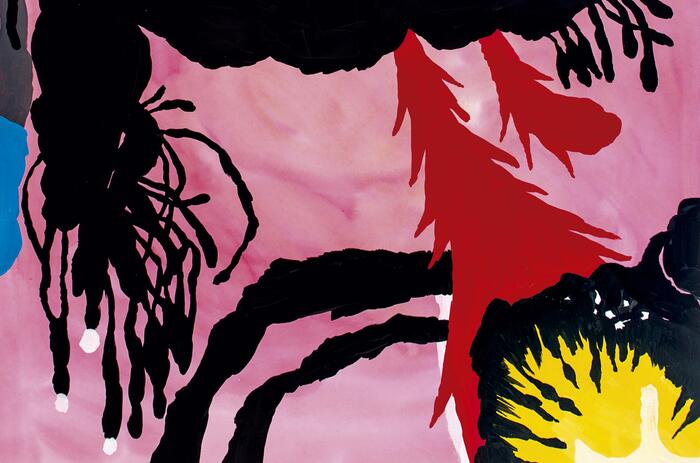
The Museo Extremeño e Iberoamericano de Arte Contemporáneo (MEIAC) in Badajoz is exhibiting, under the title Paisaje Transferido, a wide-ranging show by MartÍn Lopez Lam (Lima, Peru, 1981), one of the main exponents of graphic art in Spain, where he has been living for the last two decades.
MEIAC PRESENTS MARTÍN LÓPEZ LAM’S PAISAJE TRANSFERIDO
The Museo Extremeño e Iberoamericano de Arte Contemporáneo (MEIAC) in Badajoz is exhibiting, under the title Paisaje Transferido, a wide-ranging show by MartÍn Lopez Lam (Lima, Peru, 1981), one of the main exponents of graphic art in Spain, where he has been living for the last two decades.

Tania Pardo (Madrid, Spain, 1976) is the new Director of the Museo Centro de Arte Dos de Mayo (CA2M Museum), the museum of contemporary art of the Community of Madrid. Pardo's career until her recent appointment has been built on a detailed work of promotion and visibility of emerging art through the curatorial actions she has developed in numerous Spanish institutions.
INTERVIEW WITH TANIA PARDO, NEW DIRECTOR OF CA2M MUSEUM
Tania Pardo (Madrid, Spain, 1976) is the new Director of the Museo Centro de Arte Dos de Mayo (CA2M Museum), the museum of contemporary art of the Community of Madrid. Pardo's career until her recent appointment has been built on a detailed work of promotion and visibility of emerging art through the curatorial actions she has developed in numerous Spanish institutions.
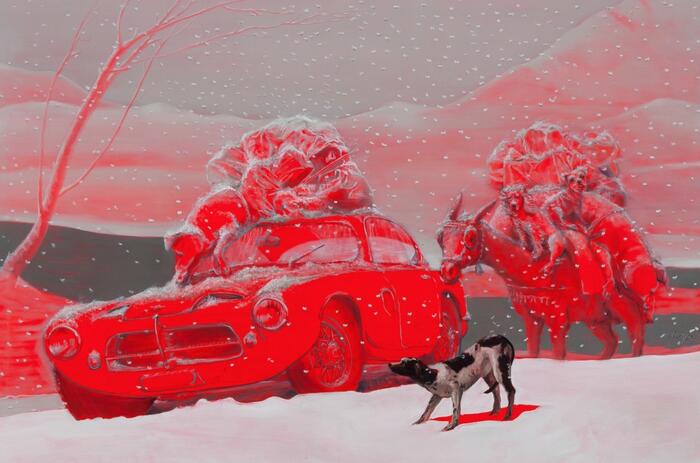
Alberto Baraya (Bogota, Colombia, 1968) lands through El Naturalista Artificial, his alter ego for the occasion, his working method to research and search, in an almost expeditionary way, the knowledge and exotic objects of the world in Fábulas Goyescas, recently inaugurated at Fernando Pradilla in Madrid.
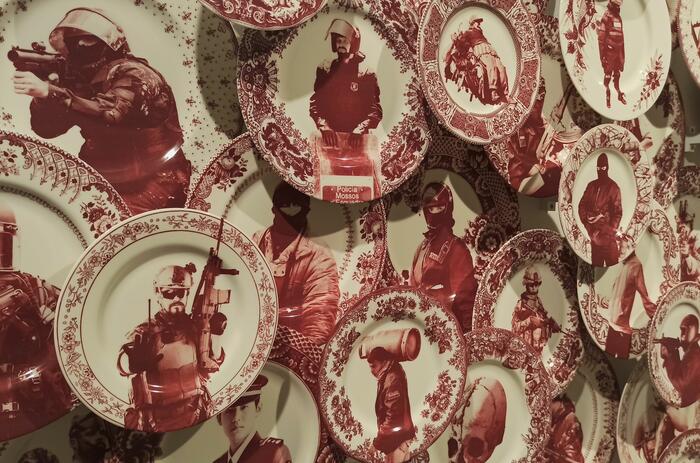
The Seville-based Fundación Valentín de Madariaga y Oya raises in its collective exhibition Herencia. Proyecto 360º the need to reconsider actions and return to the essential and almost primary link through the observation and analysis of our environment and its possibilities. The show gathers the work of fifteen international artists who become instrumental through their works for this purpose.
HERENCIA. PROYECTO 360º AND THE RECONSIDERATION OF OUR ACTIONS
The Seville-based Fundación Valentín de Madariaga y Oya raises in its collective exhibition Herencia. Proyecto 360º the need to reconsider actions and return to the essential and almost primary link through the observation and analysis of our environment and its possibilities. The show gathers the work of fifteen international artists who become instrumental through their works for this purpose.
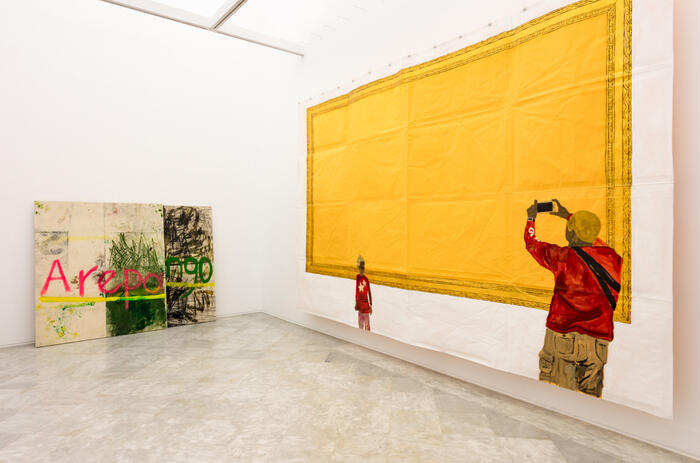
THE BALANCED REPRESENTATION OF LO LATINOAMERICANO IN THE JORGE M. PÉREZ COLLECTION

El Museo del Barrio presented the exhibition Amalia Mesa-Bains: Archaeology of Memory, the first retrospective exhibition by the pioneering artist, curator, and theorist. Born in 1943 to a Mexican immigrant family, Mesa-Bains has been a leading figure in Chicanx art for nearly half a century.
AMALIA MESA-BAINS: ARCHAEOLOGY OF MEMORY
El Museo del Barrio presented the exhibition Amalia Mesa-Bains: Archaeology of Memory, the first retrospective exhibition by the pioneering artist, curator, and theorist. Born in 1943 to a Mexican immigrant family, Mesa-Bains has been a leading figure in Chicanx art for nearly half a century.
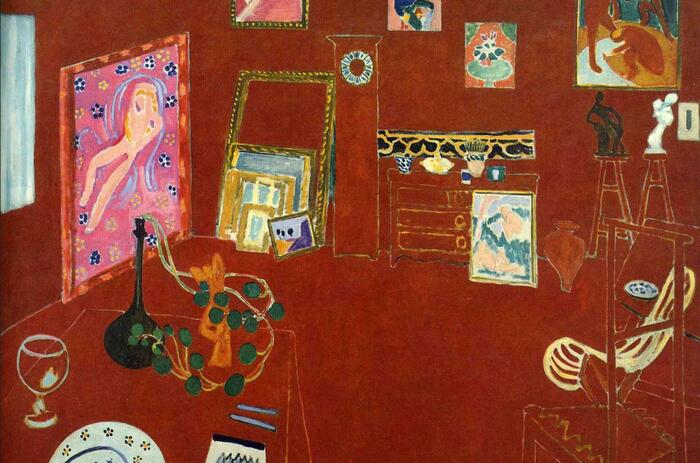
Fondation Louis Vuitton, in collaboration with The Museum of Modern Art, New York and the SMK—Statens Museum for Kunst, Copenhagen, is hosting the exhibition Matisse: The Red Studio, focusing on the genesis and history of the 1911 masterpiece.
MATISSE: THE RED STUDIO AT FONDATION LOUIS VUITTON
Fondation Louis Vuitton, in collaboration with The Museum of Modern Art, New York and the SMK—Statens Museum for Kunst, Copenhagen, is hosting the exhibition Matisse: The Red Studio, focusing on the genesis and history of the 1911 masterpiece.
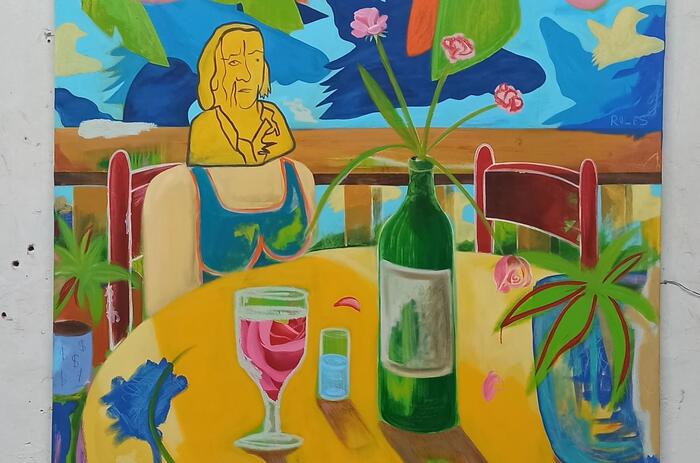
The birth of a new collective is always good news, and it is so for several reasons. Firstly, because of the existence of collective dynamics that bring together different points of view and, second, because, in a didactic way, it contributes to illustrate and understand the current cartographies of art. For the Revolú collective, formed by Andrés Meléndez (San Juan, Puerto Rico, 1996), Miguel Ángel Feba (San Juan, Puerto Rico, 1994) and Marcos Daniel Vicéns (Bayamón, Puerto Rico, 1996), their first exhibition experience is the result of an artistic residency in which, almost blindly, they have been able to build those specific ties to start from the individual and reach the group identity.
GENESIS AND BORICUA RESONANCES IN REVOLÚ
The birth of a new collective is always good news, and it is so for several reasons. Firstly, because of the existence of collective dynamics that bring together different points of view and, second, because, in a didactic way, it contributes to illustrate and understand the current cartographies of art. For the Revolú collective, formed by Andrés Meléndez (San Juan, Puerto Rico, 1996), Miguel Ángel Feba (San Juan, Puerto Rico, 1994) and Marcos Daniel Vicéns (Bayamón, Puerto Rico, 1996), their first exhibition experience is the result of an artistic residency in which, almost blindly, they have been able to build those specific ties to start from the individual and reach the group identity.

It could have been an ordinary retrospective, but the decision to participate in some way in the creative process is a differential and even declarative point in Tembló acá un delirio, the exhibition that Museo CA2M in Móstoles delves into the figure, and at first hand, of Ana Gallardo (Rosario, Argentina, 1958).
ANA GALLARDO'S RECONSTRUCTION AND “DELIRIUM”
It could have been an ordinary retrospective, but the decision to participate in some way in the creative process is a differential and even declarative point in Tembló acá un delirio, the exhibition that Museo CA2M in Móstoles delves into the figure, and at first hand, of Ana Gallardo (Rosario, Argentina, 1958).

The Museo Extremeño e Iberoamericano de Arte Contemporáneo (MEIAC) in Badajoz is exhibiting, under the title Paisaje Transferido, a wide-ranging show by MartÍn Lopez Lam (Lima, Peru, 1981), one of the main exponents of graphic art in Spain, where he has been living for the last two decades.
MEIAC PRESENTS MARTÍN LÓPEZ LAM’S PAISAJE TRANSFERIDO
The Museo Extremeño e Iberoamericano de Arte Contemporáneo (MEIAC) in Badajoz is exhibiting, under the title Paisaje Transferido, a wide-ranging show by MartÍn Lopez Lam (Lima, Peru, 1981), one of the main exponents of graphic art in Spain, where he has been living for the last two decades.

Tania Pardo (Madrid, Spain, 1976) is the new Director of the Museo Centro de Arte Dos de Mayo (CA2M Museum), the museum of contemporary art of the Community of Madrid. Pardo's career until her recent appointment has been built on a detailed work of promotion and visibility of emerging art through the curatorial actions she has developed in numerous Spanish institutions.
INTERVIEW WITH TANIA PARDO, NEW DIRECTOR OF CA2M MUSEUM
Tania Pardo (Madrid, Spain, 1976) is the new Director of the Museo Centro de Arte Dos de Mayo (CA2M Museum), the museum of contemporary art of the Community of Madrid. Pardo's career until her recent appointment has been built on a detailed work of promotion and visibility of emerging art through the curatorial actions she has developed in numerous Spanish institutions.

Alberto Baraya (Bogota, Colombia, 1968) lands through El Naturalista Artificial, his alter ego for the occasion, his working method to research and search, in an almost expeditionary way, the knowledge and exotic objects of the world in Fábulas Goyescas, recently inaugurated at Fernando Pradilla in Madrid.

The Seville-based Fundación Valentín de Madariaga y Oya raises in its collective exhibition Herencia. Proyecto 360º the need to reconsider actions and return to the essential and almost primary link through the observation and analysis of our environment and its possibilities. The show gathers the work of fifteen international artists who become instrumental through their works for this purpose.
HERENCIA. PROYECTO 360º AND THE RECONSIDERATION OF OUR ACTIONS
The Seville-based Fundación Valentín de Madariaga y Oya raises in its collective exhibition Herencia. Proyecto 360º the need to reconsider actions and return to the essential and almost primary link through the observation and analysis of our environment and its possibilities. The show gathers the work of fifteen international artists who become instrumental through their works for this purpose.

THE BALANCED REPRESENTATION OF LO LATINOAMERICANO IN THE JORGE M. PÉREZ COLLECTION

El Museo del Barrio presented the exhibition Amalia Mesa-Bains: Archaeology of Memory, the first retrospective exhibition by the pioneering artist, curator, and theorist. Born in 1943 to a Mexican immigrant family, Mesa-Bains has been a leading figure in Chicanx art for nearly half a century.
AMALIA MESA-BAINS: ARCHAEOLOGY OF MEMORY
El Museo del Barrio presented the exhibition Amalia Mesa-Bains: Archaeology of Memory, the first retrospective exhibition by the pioneering artist, curator, and theorist. Born in 1943 to a Mexican immigrant family, Mesa-Bains has been a leading figure in Chicanx art for nearly half a century.

Fondation Louis Vuitton, in collaboration with The Museum of Modern Art, New York and the SMK—Statens Museum for Kunst, Copenhagen, is hosting the exhibition Matisse: The Red Studio, focusing on the genesis and history of the 1911 masterpiece.
MATISSE: THE RED STUDIO AT FONDATION LOUIS VUITTON
Fondation Louis Vuitton, in collaboration with The Museum of Modern Art, New York and the SMK—Statens Museum for Kunst, Copenhagen, is hosting the exhibition Matisse: The Red Studio, focusing on the genesis and history of the 1911 masterpiece.

The birth of a new collective is always good news, and it is so for several reasons. Firstly, because of the existence of collective dynamics that bring together different points of view and, second, because, in a didactic way, it contributes to illustrate and understand the current cartographies of art. For the Revolú collective, formed by Andrés Meléndez (San Juan, Puerto Rico, 1996), Miguel Ángel Feba (San Juan, Puerto Rico, 1994) and Marcos Daniel Vicéns (Bayamón, Puerto Rico, 1996), their first exhibition experience is the result of an artistic residency in which, almost blindly, they have been able to build those specific ties to start from the individual and reach the group identity.
GENESIS AND BORICUA RESONANCES IN REVOLÚ
The birth of a new collective is always good news, and it is so for several reasons. Firstly, because of the existence of collective dynamics that bring together different points of view and, second, because, in a didactic way, it contributes to illustrate and understand the current cartographies of art. For the Revolú collective, formed by Andrés Meléndez (San Juan, Puerto Rico, 1996), Miguel Ángel Feba (San Juan, Puerto Rico, 1994) and Marcos Daniel Vicéns (Bayamón, Puerto Rico, 1996), their first exhibition experience is the result of an artistic residency in which, almost blindly, they have been able to build those specific ties to start from the individual and reach the group identity.

It could have been an ordinary retrospective, but the decision to participate in some way in the creative process is a differential and even declarative point in Tembló acá un delirio, the exhibition that Museo CA2M in Móstoles delves into the figure, and at first hand, of Ana Gallardo (Rosario, Argentina, 1958).
ANA GALLARDO'S RECONSTRUCTION AND “DELIRIUM”
It could have been an ordinary retrospective, but the decision to participate in some way in the creative process is a differential and even declarative point in Tembló acá un delirio, the exhibition that Museo CA2M in Móstoles delves into the figure, and at first hand, of Ana Gallardo (Rosario, Argentina, 1958).

The Museo Extremeño e Iberoamericano de Arte Contemporáneo (MEIAC) in Badajoz is exhibiting, under the title Paisaje Transferido, a wide-ranging show by MartÍn Lopez Lam (Lima, Peru, 1981), one of the main exponents of graphic art in Spain, where he has been living for the last two decades.
MEIAC PRESENTS MARTÍN LÓPEZ LAM’S PAISAJE TRANSFERIDO
The Museo Extremeño e Iberoamericano de Arte Contemporáneo (MEIAC) in Badajoz is exhibiting, under the title Paisaje Transferido, a wide-ranging show by MartÍn Lopez Lam (Lima, Peru, 1981), one of the main exponents of graphic art in Spain, where he has been living for the last two decades.

Tania Pardo (Madrid, Spain, 1976) is the new Director of the Museo Centro de Arte Dos de Mayo (CA2M Museum), the museum of contemporary art of the Community of Madrid. Pardo's career until her recent appointment has been built on a detailed work of promotion and visibility of emerging art through the curatorial actions she has developed in numerous Spanish institutions.
INTERVIEW WITH TANIA PARDO, NEW DIRECTOR OF CA2M MUSEUM
Tania Pardo (Madrid, Spain, 1976) is the new Director of the Museo Centro de Arte Dos de Mayo (CA2M Museum), the museum of contemporary art of the Community of Madrid. Pardo's career until her recent appointment has been built on a detailed work of promotion and visibility of emerging art through the curatorial actions she has developed in numerous Spanish institutions.

Alberto Baraya (Bogota, Colombia, 1968) lands through El Naturalista Artificial, his alter ego for the occasion, his working method to research and search, in an almost expeditionary way, the knowledge and exotic objects of the world in Fábulas Goyescas, recently inaugurated at Fernando Pradilla in Madrid.

The Seville-based Fundación Valentín de Madariaga y Oya raises in its collective exhibition Herencia. Proyecto 360º the need to reconsider actions and return to the essential and almost primary link through the observation and analysis of our environment and its possibilities. The show gathers the work of fifteen international artists who become instrumental through their works for this purpose.
HERENCIA. PROYECTO 360º AND THE RECONSIDERATION OF OUR ACTIONS
The Seville-based Fundación Valentín de Madariaga y Oya raises in its collective exhibition Herencia. Proyecto 360º the need to reconsider actions and return to the essential and almost primary link through the observation and analysis of our environment and its possibilities. The show gathers the work of fifteen international artists who become instrumental through their works for this purpose.

THE BALANCED REPRESENTATION OF LO LATINOAMERICANO IN THE JORGE M. PÉREZ COLLECTION

El Museo del Barrio presented the exhibition Amalia Mesa-Bains: Archaeology of Memory, the first retrospective exhibition by the pioneering artist, curator, and theorist. Born in 1943 to a Mexican immigrant family, Mesa-Bains has been a leading figure in Chicanx art for nearly half a century.
AMALIA MESA-BAINS: ARCHAEOLOGY OF MEMORY
El Museo del Barrio presented the exhibition Amalia Mesa-Bains: Archaeology of Memory, the first retrospective exhibition by the pioneering artist, curator, and theorist. Born in 1943 to a Mexican immigrant family, Mesa-Bains has been a leading figure in Chicanx art for nearly half a century.

Fondation Louis Vuitton, in collaboration with The Museum of Modern Art, New York and the SMK—Statens Museum for Kunst, Copenhagen, is hosting the exhibition Matisse: The Red Studio, focusing on the genesis and history of the 1911 masterpiece.
MATISSE: THE RED STUDIO AT FONDATION LOUIS VUITTON
Fondation Louis Vuitton, in collaboration with The Museum of Modern Art, New York and the SMK—Statens Museum for Kunst, Copenhagen, is hosting the exhibition Matisse: The Red Studio, focusing on the genesis and history of the 1911 masterpiece.

The birth of a new collective is always good news, and it is so for several reasons. Firstly, because of the existence of collective dynamics that bring together different points of view and, second, because, in a didactic way, it contributes to illustrate and understand the current cartographies of art. For the Revolú collective, formed by Andrés Meléndez (San Juan, Puerto Rico, 1996), Miguel Ángel Feba (San Juan, Puerto Rico, 1994) and Marcos Daniel Vicéns (Bayamón, Puerto Rico, 1996), their first exhibition experience is the result of an artistic residency in which, almost blindly, they have been able to build those specific ties to start from the individual and reach the group identity.
GENESIS AND BORICUA RESONANCES IN REVOLÚ
The birth of a new collective is always good news, and it is so for several reasons. Firstly, because of the existence of collective dynamics that bring together different points of view and, second, because, in a didactic way, it contributes to illustrate and understand the current cartographies of art. For the Revolú collective, formed by Andrés Meléndez (San Juan, Puerto Rico, 1996), Miguel Ángel Feba (San Juan, Puerto Rico, 1994) and Marcos Daniel Vicéns (Bayamón, Puerto Rico, 1996), their first exhibition experience is the result of an artistic residency in which, almost blindly, they have been able to build those specific ties to start from the individual and reach the group identity.

It could have been an ordinary retrospective, but the decision to participate in some way in the creative process is a differential and even declarative point in Tembló acá un delirio, the exhibition that Museo CA2M in Móstoles delves into the figure, and at first hand, of Ana Gallardo (Rosario, Argentina, 1958).
ANA GALLARDO'S RECONSTRUCTION AND “DELIRIUM”
It could have been an ordinary retrospective, but the decision to participate in some way in the creative process is a differential and even declarative point in Tembló acá un delirio, the exhibition that Museo CA2M in Móstoles delves into the figure, and at first hand, of Ana Gallardo (Rosario, Argentina, 1958).

The Museo Extremeño e Iberoamericano de Arte Contemporáneo (MEIAC) in Badajoz is exhibiting, under the title Paisaje Transferido, a wide-ranging show by MartÍn Lopez Lam (Lima, Peru, 1981), one of the main exponents of graphic art in Spain, where he has been living for the last two decades.
MEIAC PRESENTS MARTÍN LÓPEZ LAM’S PAISAJE TRANSFERIDO
The Museo Extremeño e Iberoamericano de Arte Contemporáneo (MEIAC) in Badajoz is exhibiting, under the title Paisaje Transferido, a wide-ranging show by MartÍn Lopez Lam (Lima, Peru, 1981), one of the main exponents of graphic art in Spain, where he has been living for the last two decades.

Tania Pardo (Madrid, Spain, 1976) is the new Director of the Museo Centro de Arte Dos de Mayo (CA2M Museum), the museum of contemporary art of the Community of Madrid. Pardo's career until her recent appointment has been built on a detailed work of promotion and visibility of emerging art through the curatorial actions she has developed in numerous Spanish institutions.
INTERVIEW WITH TANIA PARDO, NEW DIRECTOR OF CA2M MUSEUM
Tania Pardo (Madrid, Spain, 1976) is the new Director of the Museo Centro de Arte Dos de Mayo (CA2M Museum), the museum of contemporary art of the Community of Madrid. Pardo's career until her recent appointment has been built on a detailed work of promotion and visibility of emerging art through the curatorial actions she has developed in numerous Spanish institutions.

Alberto Baraya (Bogota, Colombia, 1968) lands through El Naturalista Artificial, his alter ego for the occasion, his working method to research and search, in an almost expeditionary way, the knowledge and exotic objects of the world in Fábulas Goyescas, recently inaugurated at Fernando Pradilla in Madrid.

The Seville-based Fundación Valentín de Madariaga y Oya raises in its collective exhibition Herencia. Proyecto 360º the need to reconsider actions and return to the essential and almost primary link through the observation and analysis of our environment and its possibilities. The show gathers the work of fifteen international artists who become instrumental through their works for this purpose.
HERENCIA. PROYECTO 360º AND THE RECONSIDERATION OF OUR ACTIONS
The Seville-based Fundación Valentín de Madariaga y Oya raises in its collective exhibition Herencia. Proyecto 360º the need to reconsider actions and return to the essential and almost primary link through the observation and analysis of our environment and its possibilities. The show gathers the work of fifteen international artists who become instrumental through their works for this purpose.

THE BALANCED REPRESENTATION OF LO LATINOAMERICANO IN THE JORGE M. PÉREZ COLLECTION

El Museo del Barrio presented the exhibition Amalia Mesa-Bains: Archaeology of Memory, the first retrospective exhibition by the pioneering artist, curator, and theorist. Born in 1943 to a Mexican immigrant family, Mesa-Bains has been a leading figure in Chicanx art for nearly half a century.
AMALIA MESA-BAINS: ARCHAEOLOGY OF MEMORY
El Museo del Barrio presented the exhibition Amalia Mesa-Bains: Archaeology of Memory, the first retrospective exhibition by the pioneering artist, curator, and theorist. Born in 1943 to a Mexican immigrant family, Mesa-Bains has been a leading figure in Chicanx art for nearly half a century.

Fondation Louis Vuitton, in collaboration with The Museum of Modern Art, New York and the SMK—Statens Museum for Kunst, Copenhagen, is hosting the exhibition Matisse: The Red Studio, focusing on the genesis and history of the 1911 masterpiece.
MATISSE: THE RED STUDIO AT FONDATION LOUIS VUITTON
Fondation Louis Vuitton, in collaboration with The Museum of Modern Art, New York and the SMK—Statens Museum for Kunst, Copenhagen, is hosting the exhibition Matisse: The Red Studio, focusing on the genesis and history of the 1911 masterpiece.

The birth of a new collective is always good news, and it is so for several reasons. Firstly, because of the existence of collective dynamics that bring together different points of view and, second, because, in a didactic way, it contributes to illustrate and understand the current cartographies of art. For the Revolú collective, formed by Andrés Meléndez (San Juan, Puerto Rico, 1996), Miguel Ángel Feba (San Juan, Puerto Rico, 1994) and Marcos Daniel Vicéns (Bayamón, Puerto Rico, 1996), their first exhibition experience is the result of an artistic residency in which, almost blindly, they have been able to build those specific ties to start from the individual and reach the group identity.
GENESIS AND BORICUA RESONANCES IN REVOLÚ
The birth of a new collective is always good news, and it is so for several reasons. Firstly, because of the existence of collective dynamics that bring together different points of view and, second, because, in a didactic way, it contributes to illustrate and understand the current cartographies of art. For the Revolú collective, formed by Andrés Meléndez (San Juan, Puerto Rico, 1996), Miguel Ángel Feba (San Juan, Puerto Rico, 1994) and Marcos Daniel Vicéns (Bayamón, Puerto Rico, 1996), their first exhibition experience is the result of an artistic residency in which, almost blindly, they have been able to build those specific ties to start from the individual and reach the group identity.

It could have been an ordinary retrospective, but the decision to participate in some way in the creative process is a differential and even declarative point in Tembló acá un delirio, the exhibition that Museo CA2M in Móstoles delves into the figure, and at first hand, of Ana Gallardo (Rosario, Argentina, 1958).
ANA GALLARDO'S RECONSTRUCTION AND “DELIRIUM”
It could have been an ordinary retrospective, but the decision to participate in some way in the creative process is a differential and even declarative point in Tembló acá un delirio, the exhibition that Museo CA2M in Móstoles delves into the figure, and at first hand, of Ana Gallardo (Rosario, Argentina, 1958).

The Museo Extremeño e Iberoamericano de Arte Contemporáneo (MEIAC) in Badajoz is exhibiting, under the title Paisaje Transferido, a wide-ranging show by MartÍn Lopez Lam (Lima, Peru, 1981), one of the main exponents of graphic art in Spain, where he has been living for the last two decades.
MEIAC PRESENTS MARTÍN LÓPEZ LAM’S PAISAJE TRANSFERIDO
The Museo Extremeño e Iberoamericano de Arte Contemporáneo (MEIAC) in Badajoz is exhibiting, under the title Paisaje Transferido, a wide-ranging show by MartÍn Lopez Lam (Lima, Peru, 1981), one of the main exponents of graphic art in Spain, where he has been living for the last two decades.

Tania Pardo (Madrid, Spain, 1976) is the new Director of the Museo Centro de Arte Dos de Mayo (CA2M Museum), the museum of contemporary art of the Community of Madrid. Pardo's career until her recent appointment has been built on a detailed work of promotion and visibility of emerging art through the curatorial actions she has developed in numerous Spanish institutions.
INTERVIEW WITH TANIA PARDO, NEW DIRECTOR OF CA2M MUSEUM
Tania Pardo (Madrid, Spain, 1976) is the new Director of the Museo Centro de Arte Dos de Mayo (CA2M Museum), the museum of contemporary art of the Community of Madrid. Pardo's career until her recent appointment has been built on a detailed work of promotion and visibility of emerging art through the curatorial actions she has developed in numerous Spanish institutions.

Alberto Baraya (Bogota, Colombia, 1968) lands through El Naturalista Artificial, his alter ego for the occasion, his working method to research and search, in an almost expeditionary way, the knowledge and exotic objects of the world in Fábulas Goyescas, recently inaugurated at Fernando Pradilla in Madrid.

The Seville-based Fundación Valentín de Madariaga y Oya raises in its collective exhibition Herencia. Proyecto 360º the need to reconsider actions and return to the essential and almost primary link through the observation and analysis of our environment and its possibilities. The show gathers the work of fifteen international artists who become instrumental through their works for this purpose.
HERENCIA. PROYECTO 360º AND THE RECONSIDERATION OF OUR ACTIONS
The Seville-based Fundación Valentín de Madariaga y Oya raises in its collective exhibition Herencia. Proyecto 360º the need to reconsider actions and return to the essential and almost primary link through the observation and analysis of our environment and its possibilities. The show gathers the work of fifteen international artists who become instrumental through their works for this purpose.

THE BALANCED REPRESENTATION OF LO LATINOAMERICANO IN THE JORGE M. PÉREZ COLLECTION

El Museo del Barrio presented the exhibition Amalia Mesa-Bains: Archaeology of Memory, the first retrospective exhibition by the pioneering artist, curator, and theorist. Born in 1943 to a Mexican immigrant family, Mesa-Bains has been a leading figure in Chicanx art for nearly half a century.
AMALIA MESA-BAINS: ARCHAEOLOGY OF MEMORY
El Museo del Barrio presented the exhibition Amalia Mesa-Bains: Archaeology of Memory, the first retrospective exhibition by the pioneering artist, curator, and theorist. Born in 1943 to a Mexican immigrant family, Mesa-Bains has been a leading figure in Chicanx art for nearly half a century.

Fondation Louis Vuitton, in collaboration with The Museum of Modern Art, New York and the SMK—Statens Museum for Kunst, Copenhagen, is hosting the exhibition Matisse: The Red Studio, focusing on the genesis and history of the 1911 masterpiece.
MATISSE: THE RED STUDIO AT FONDATION LOUIS VUITTON
Fondation Louis Vuitton, in collaboration with The Museum of Modern Art, New York and the SMK—Statens Museum for Kunst, Copenhagen, is hosting the exhibition Matisse: The Red Studio, focusing on the genesis and history of the 1911 masterpiece.

The birth of a new collective is always good news, and it is so for several reasons. Firstly, because of the existence of collective dynamics that bring together different points of view and, second, because, in a didactic way, it contributes to illustrate and understand the current cartographies of art. For the Revolú collective, formed by Andrés Meléndez (San Juan, Puerto Rico, 1996), Miguel Ángel Feba (San Juan, Puerto Rico, 1994) and Marcos Daniel Vicéns (Bayamón, Puerto Rico, 1996), their first exhibition experience is the result of an artistic residency in which, almost blindly, they have been able to build those specific ties to start from the individual and reach the group identity.
GENESIS AND BORICUA RESONANCES IN REVOLÚ
The birth of a new collective is always good news, and it is so for several reasons. Firstly, because of the existence of collective dynamics that bring together different points of view and, second, because, in a didactic way, it contributes to illustrate and understand the current cartographies of art. For the Revolú collective, formed by Andrés Meléndez (San Juan, Puerto Rico, 1996), Miguel Ángel Feba (San Juan, Puerto Rico, 1994) and Marcos Daniel Vicéns (Bayamón, Puerto Rico, 1996), their first exhibition experience is the result of an artistic residency in which, almost blindly, they have been able to build those specific ties to start from the individual and reach the group identity.

